Evolutionary History of Computers
The first generation of computers, marked by the discovery vacuum tubes as a means of signal amplifier. This generation was replaced by the generation of transistors, and finally the third generation arose with the advent of the IC-Chip. Now a lot of debate, whether the microprocessor which is the development and improvement of capabilities of the IC-chip can be regarded as the pioneer generation of the fourth, or still remains on the third generation. The reason that support is, the ability of the microprocessor is well above the IC-Chip,
who declined to say is, that the basic concept remains the same microprocessor and it is just an enhancement of the capabilities of the IC-Chip alone. Thus, at present there who think that we've entered the computer generation of the fourth and even fifth, but some are still argue that we have not moved from the third generation.Here is the course of development of computers from the first generation to the present. For a long time it takes to get to that state as now. Evolution is as follows:
a. First Generation.
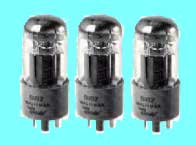 Vacuum tubes as a signal amplifier, is typical of first generation computers. At first, the vacuum tube (vacuum-tube) is used as a component of a signal amplifier. Raw materials consisting of glass, so much has disadvantages, such as: easily broken, and easy to distribute the heat. This heat needs to be neutralized by other components that serves as a coolant.
Vacuum tubes as a signal amplifier, is typical of first generation computers. At first, the vacuum tube (vacuum-tube) is used as a component of a signal amplifier. Raw materials consisting of glass, so much has disadvantages, such as: easily broken, and easy to distribute the heat. This heat needs to be neutralized by other components that serves as a coolant.And the presence of additional components, existing computer finally become large, heavy and expensive. In 1946, the world's first electronic computer the ENIAC was completed. On the computer contained 18,800 vacuum tubes and weighs 30 tons. so large in size, to the point that requires a separate classroom.
In the picture appears ENIAC computer, which is the world's first electronic computer that has a weight weighing 30 tons, length 30 M and 2.4 M high and requires 174 kilowatts of electrical power.
b. Second Generation.
Transistors are the hallmark of second-generation computers. Raw material consists of three layers, namely: "basic", "collector" and "emmiter". Transistor Resistor stands for Transfer, which means to influence the survival between two of the three layers, then the power (resistor) which is in the next layer can also be affected.
Thus, the transistor functions as a signal amplifier. As a component of solid, tansistor has many advantages such as: not easily broken, do not distribute the heat. and thus, there are computers becoming smaller and cheaper.
In the 1960s, IBM introduced the use of commercial computer transistors and is widely used starting in the market. IBM-7090 computer made in the United States is one that utilizes commercial transistor computer.
This computer is designed to solve all sorts of good work that is scientific or commercial. Because of the speed and capabilities it has, causing the IBM 7090 became very popular. Other second-generation computers are: IBM Serie 1400, Serie NCR 304, MARK IV and the Honeywell Model 800.
c. Third Generation
The concept of the smaller and more affordable than transistors, eventually spurring people to continue to conduct various studies. Thousands transistor finally combined in one form a very small. Yag silicium size piece has successfully created a few millimeters, and this is what is referred to as Integrated Circuit or IC-chip that are characteristic of third generation computers.
The magnetic rings can be magnetized in one direction or the opposite, and finally to sinyalkan condition "ON" or "OFF" which is then translated into the concept of 0 and 1 in the binary system which is needed by the computer. In every field there are 924 memory magnetic rings, each representing one bit of information. Millions of bits of information now resides in a single chip with a very small form. IBM S-360 is the first computer to use the IC and was introduced in 1964 as apparent in the image on.
Computer used for automation first introduced in 1968 by PDC 808, which has 4 KB (kilo-byte) memory and 8 bits for core memory as seen in the picture.
d. Fourth Generation
Chiri typical microprocessor is the fourth generation of computers that are thousands of compaction into an IC chip. Because the form is getting smaller and ever-increasing capabilities increase and the price offered is also getting cheaper. Microprocessor is the beginning of the birth of personal computers. In 1971, Intel Corp. and developed the first microprocessor serie 4004.
Examples of this generation is the Apple I Computer, developed by Steve Wozniak and Steve Jobs by entering a computer microprocessor on a circuit board. In addition, later appeared TRS Model 80 with the Motorola 68000 processor type and Zilog Z-80 uses 64KB of RAM standard.
Apple II computers that use e-6502R processor type and by 64 Mb Ram as well as in the image on, also one of the PCs are very popular at that time. Operating systems used are: CP / M 8 Bit. This computer is very popular in the early 80's.
Examples of this generation is the Apple I Computer, developed by Steve Wozniak and Steve Jobs by entering a computer microprocessor on a circuit board. In addition, later appeared TRS Model 80 with the Motorola 68000 processor type and Zilog Z-80 uses 64KB of RAM standard.
Apple II computers that use e-6502R processor type and by 64 Mb Ram as well as in the image on, also one of the PCs are very popular at that time. Operating systems used are: CP / M 8 Bit. This computer is very popular in the early 80's.
IBM Personal Computer began issuing in about the year 1981 as it appears in the picture, using the Operating System 16 Bit MS-DOS. Due to the price offered is not much different from other computers, besides the technology is much better and bigger than IBM's own name, then in a very short time the computer is becoming very popular.
e. Generation Next
In this generation is characterized by the emergence of: LSI (Large Scale Integration) which is the solidification of thousands of microprocessors into a microprocesor. Moreover, it also marked by the emergence of microprocessor and semi-conductors. Companies that make micro-processors are: Intel Corporation, Motorola, Zilog and others. Market we can see a microprocessor from Intel with models 4004, 8088, 80286, 80386, 80486, and Pentium.
Pentium-4 is the latest production from Intel Corporation is expected to cover all the weaknesses that exist in previous products, in addition, the ability and speed of the Pentium-4 also increased to 2 GHz. The pictures that appear to be smoother and sharper, in addition to the speed of processing, sending or receiving images also become faster and faster.
Pentium-4 manufactured using micron technology 00:18. With the smaller the resulting form of power, current and voltage heat emitted is also getting smaller. With a faster processor cooler, can produce a higher MHz speed. Speed-owned is 20 times faster than Pentium generation - 3.
Packard Bell iXtreme 4140i PC computer is one that has been used as a Pentium-4 processor with a speed of 1.4 GHz, 128 MB of RDRAM memory, 40 GB hard drive (1.5 GB used for recovery), and GeForce2 MX video card with 32 MB memory.
HP Pavilion 9850 is also a PC using a Pentium-4 to its processor with 1.4 GHz speed. PC Pentium-4 Hewllett-Packard came up with the dominant color is black and gray. Compared with other PC, Pavilion is a PC Pentium-4 with complete facilities. Owned by RDRAM Memory 128 MB, 30 GB hard drive with a monitor at 17 inches.
http://kuliah.dinus.ac.id/edi-nur/sb1-2.html





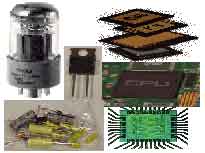
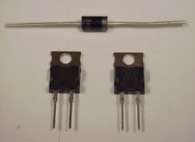
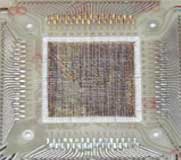
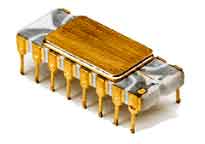
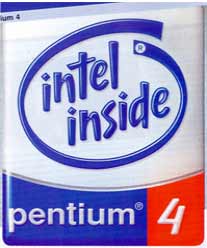




Post a Comment